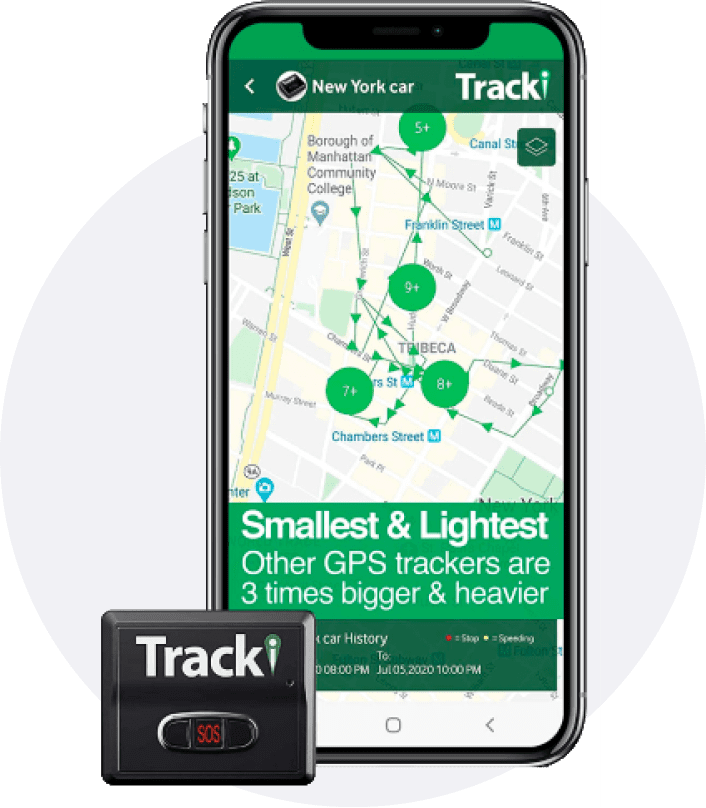Affordable GPS Tracking Options: Locate the Right Service for You
Maximizing Efficiency With GPS Monitoring: Techniques for Fleet Monitoring and Property Surveillance
In the world of fleet administration and possession surveillance, the use of General practitioner monitoring systems has actually ended up being a cornerstone for boosting operational performance and performance. As we check out the numerous techniques and techniques to maximize performance with General practitioner monitoring, a world of possibilities opens up to redefine how companies manage their fleets and check their assets.
Applying Real-Time Tracking Systems
To take full advantage of functional performance, companies can carry out real-time radar that offer immediate place data for their possessions. By utilizing GPS innovation, businesses can gain real-time insights right into the whereabouts of their vehicles, equipment, and other important resources. This degree of presence enables firms to streamline procedures, boost performance, and boost general efficiency.
Real-time radar provide various advantages for business across different markets. With the ability to check possessions continually, organizations can optimize directing, timetable upkeep better, and decrease the danger of burglary or loss. These systems enable organizations to react immediately to any unforeseen events or interruptions, making certain marginal downtime and optimum effectiveness.
Implementing real-time radar needs mindful planning and consideration of specific company requirements. Companies must choose the right technology company, tailor the system to satisfy their demands, and supply ample training to employees. By spending in real-time monitoring services, organizations can remain ahead of the competitors, deliver superior client solution, and accomplish lasting growth in today's busy market environment.
Maximizing Course Planning and Scheduling

One secret strategy for enhancing course preparation is to utilize historic information and real-time information to determine one of the most efficient paths for lorries. By evaluating past routes and taking into consideration factors such as web traffic patterns and distribution windows, companies can produce timetables that lessen unnecessary stops and delays. In addition, implementing vibrant routing capacities enables changes to be made in real-time based upon changing conditions, making certain that chauffeurs always take one of the most reliable path to their destination.
Enhancing Driver Efficiency and Safety And Security
Enhancing motorist efficiency and security is paramount in ensuring the smooth and safe and secure operation of a fleet. By using GPS tracking technology, fleet supervisors can monitor driver actions in real-time and provide immediate responses to promote risk-free driving techniques. This includes tracking rate limitations, extreme braking, acceleration patterns, and adherence to traffic policies.
Furthermore, general practitioner tracking systems can help in identifying motorists who may require additional training or assistance to boost their performance (gps tracking). By examining information on driving routines and patterns, fleet supervisors can carry out targeted training programs to address particular locations of improvement. This aggressive approach not just improves overall chauffeur efficiency but likewise adds to a safer job atmosphere for everyone involved
Along with performance tracking, GPS monitoring systems can also improve driver security by giving emergency assistance my response attributes. In case of a mishap or breakdown, chauffeurs can quickly send distress signals, permitting fleet managers to react without delay and send off help when needed. On the whole, integrating GPS tracking modern technology into fleet management strategies is essential for maximizing motorist performance and ensuring the security of both motorists and possessions.

Using Geofencing for Enhanced Protection
Making best use of fleet protection surpasses monitoring driver performance and security; one effective technique is through the critical use of geofencing innovation. Geofencing enables fleet managers to establish digital limits or geozones around certain places, enabling them to receive real-time alerts when automobiles get in or leave these designated areas. By setting up geofences around high-risk places such as construction sites, unapproved locations, or also consumer areas, fleet managers can enhance security actions and mitigate possible threats.
Geofencing not only this contact form improves security however also makes it possible for fast reaction times in instance of unapproved vehicle use or theft. In the occasion of a breach, alerts can be sent out to fleet managers, allowing them to take instant action to locate and recuperate the lorry. In addition, geofencing can assist in keeping track of automobile activity throughout off-hours, making sure that vehicles are not being made use of for unauthorized functions.
Incorporating GPS Information for Strategic Decision-Making
Utilizing GPS information assimilation is necessary for educated critical decision-making in fleet monitoring procedures. By incorporating GPS information right into fleet management systems, services can gain valuable understandings into their procedures, causing much more effective courses, boosted vehicle driver habits, and far better general performance. With the assimilation of GPS data, fleet supervisors can track automobile locations in real-time, monitor fuel usage, and analyze vehicle driver efficiency metrics such as rate, idling time, and extreme braking.
Furthermore, integrating GPS information permits the optimization of routes based on website traffic problems, weather condition patterns, and various other external aspects, assisting to lower shipment times and functional prices. By examining historical GPS information, fleet supervisors can determine fads, patterns, and locations for improvement, allowing them to make data-driven choices that improve efficiency view and enhance procedures.
Verdict
In conclusion, the application of general practitioner monitoring systems can greatly boost performance in fleet administration and asset tracking. By using real-time tracking, maximizing path preparation, improving driver efficiency, utilizing geofencing for protection, and integrating GPS information for tactical decision-making, companies can improve procedures and achieve price financial savings (gps tracking). These methods allow companies to streamline procedures, rise efficiency, and ultimately optimize the overall performance of their operations
In the realm of fleet monitoring and asset surveillance, the use of General practitioner monitoring systems has actually ended up being a foundation for enhancing operational performance and productivity. As we discover the various methods and techniques to optimize efficiency with General practitioner tracking, a globe of opportunities opens up to redefine exactly how organizations manage their fleets and check their possessions.
By using General practitioner tracking technology, fleet managers can keep an eye on driver behavior in real-time and offer instant feedback to promote risk-free driving practices. Through the combination of GPS information, fleet supervisors can track automobile areas in real-time, display gas consumption, and evaluate vehicle driver efficiency metrics such as rate, idling time, and extreme braking.
In final thought, the application of GPS tracking systems can greatly improve performance in fleet administration and asset tracking.